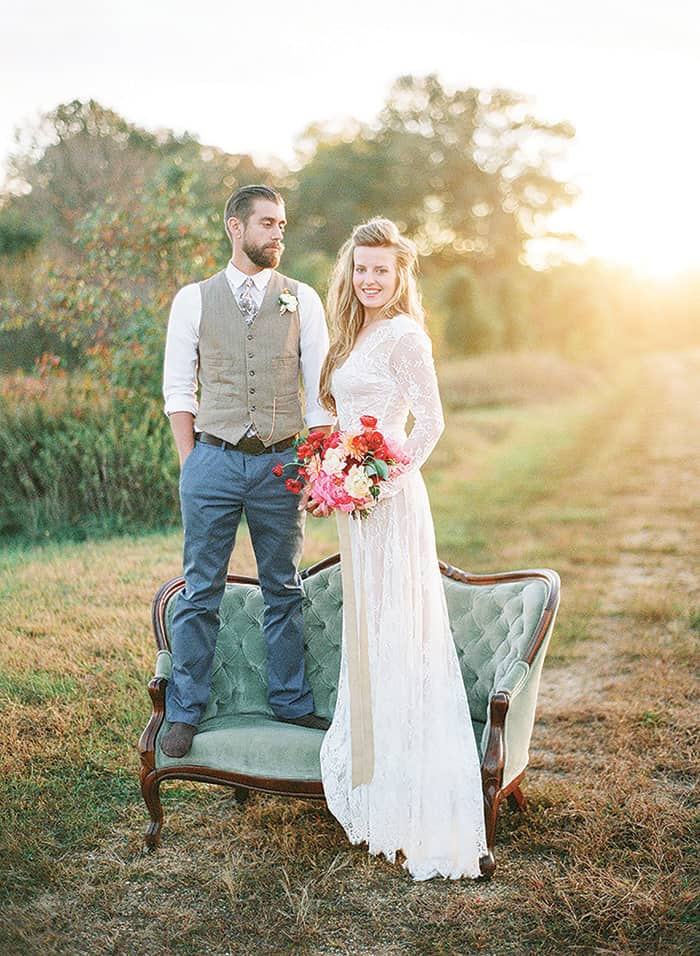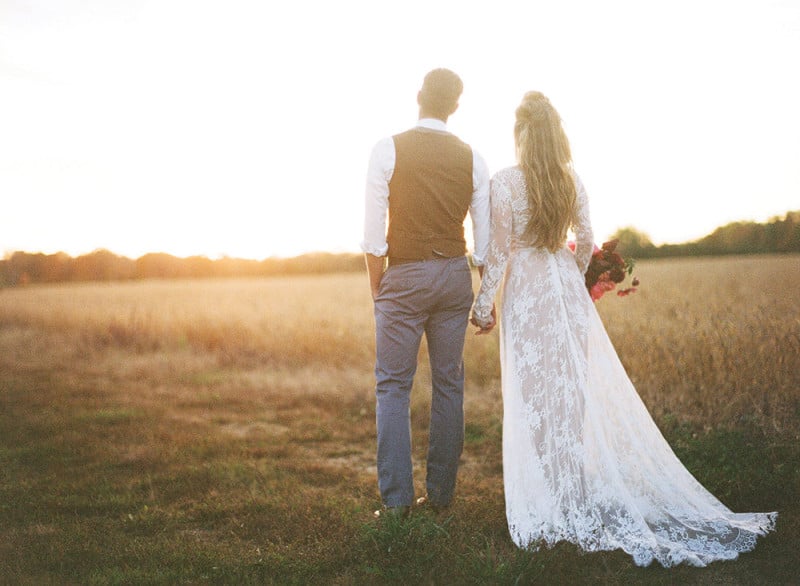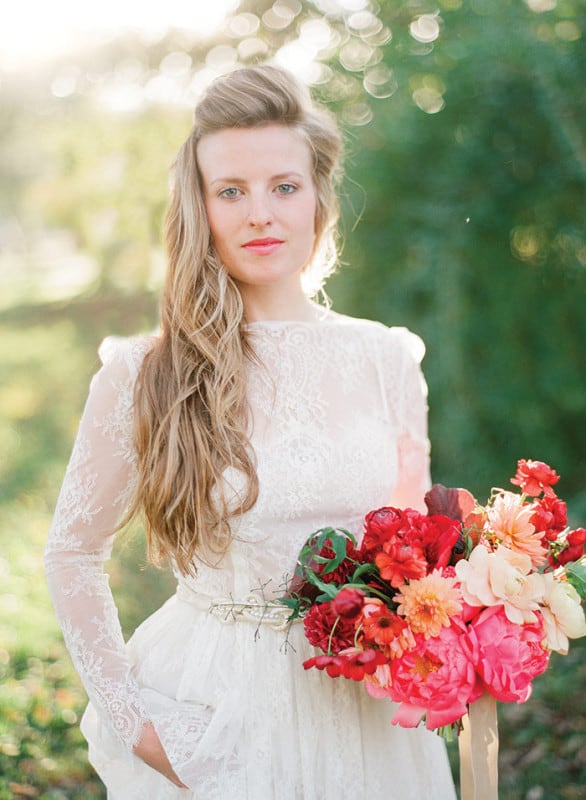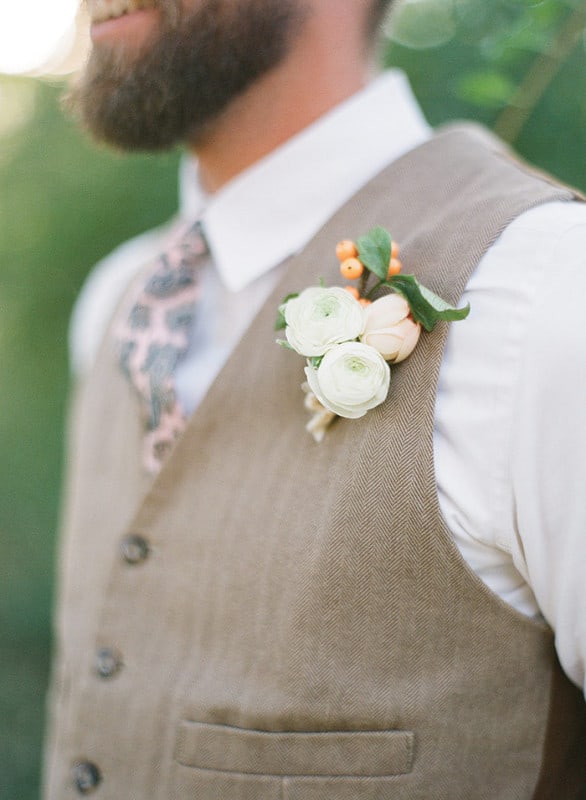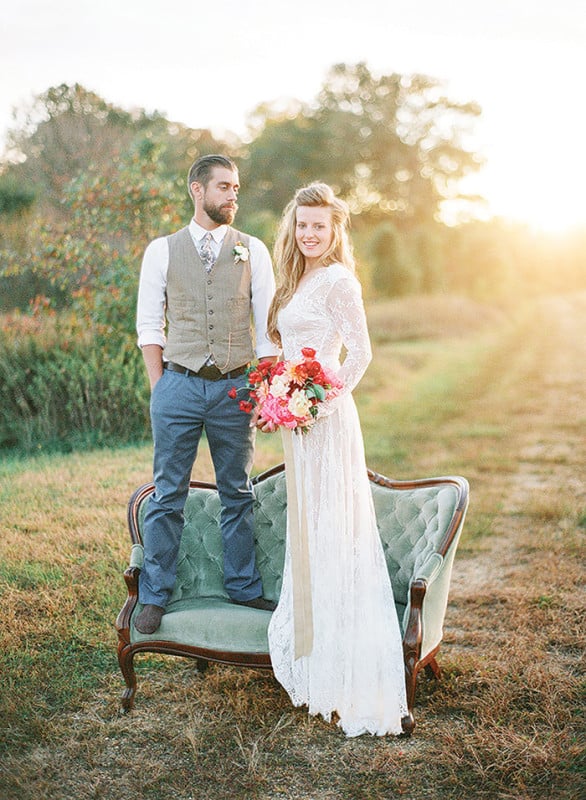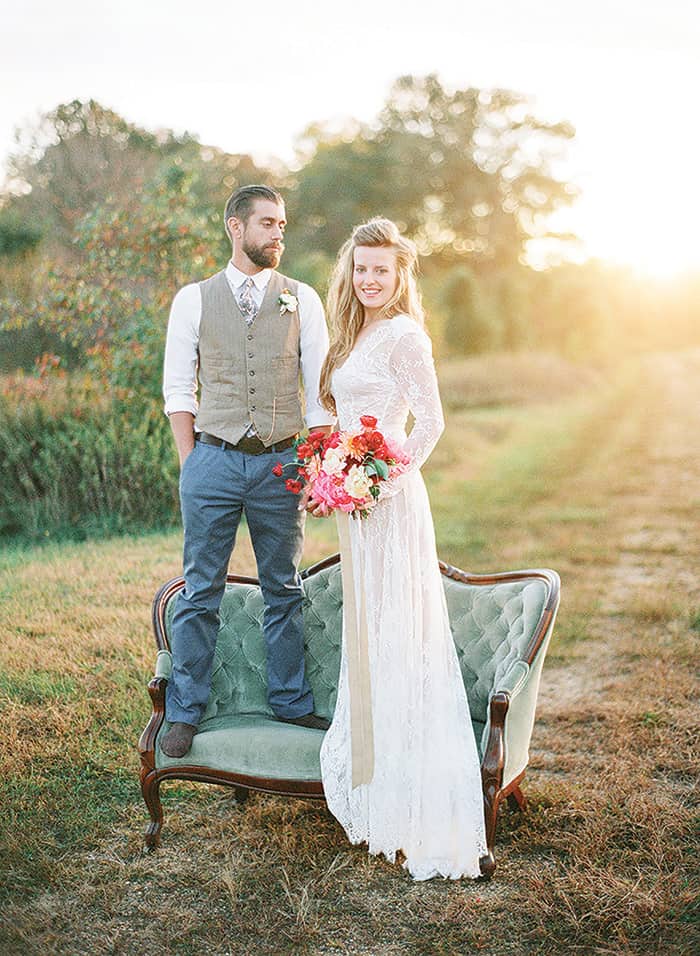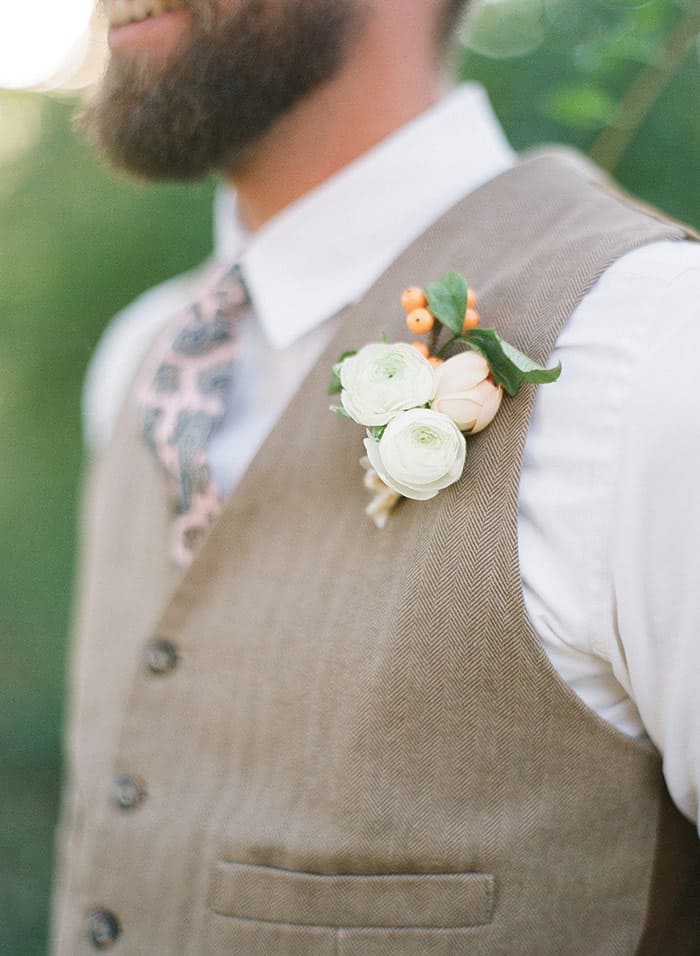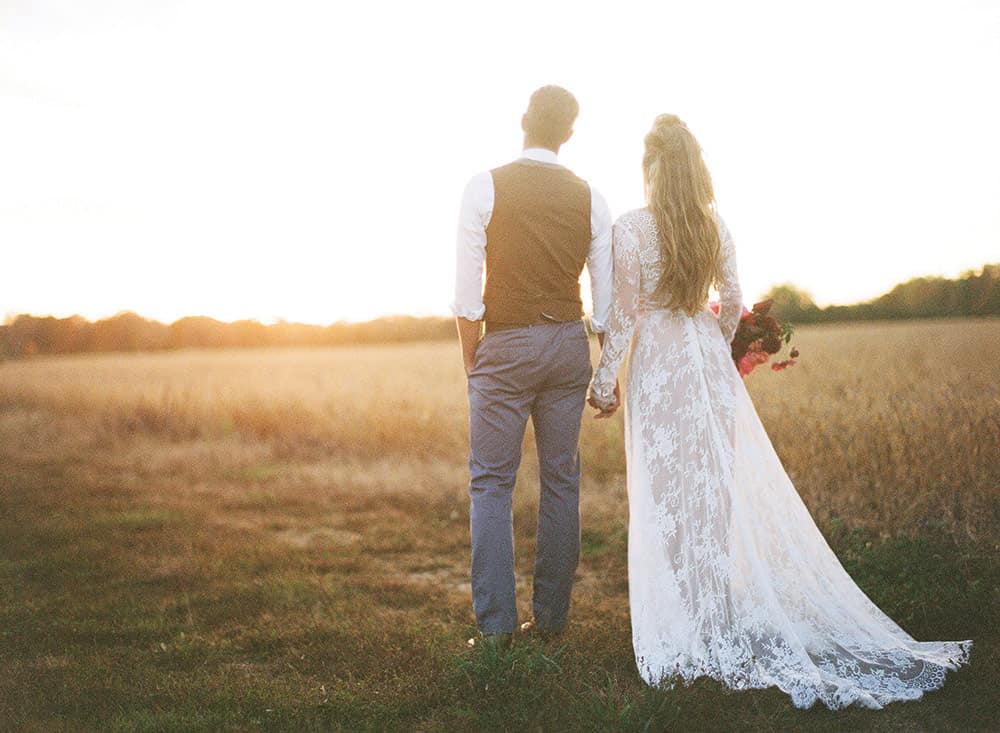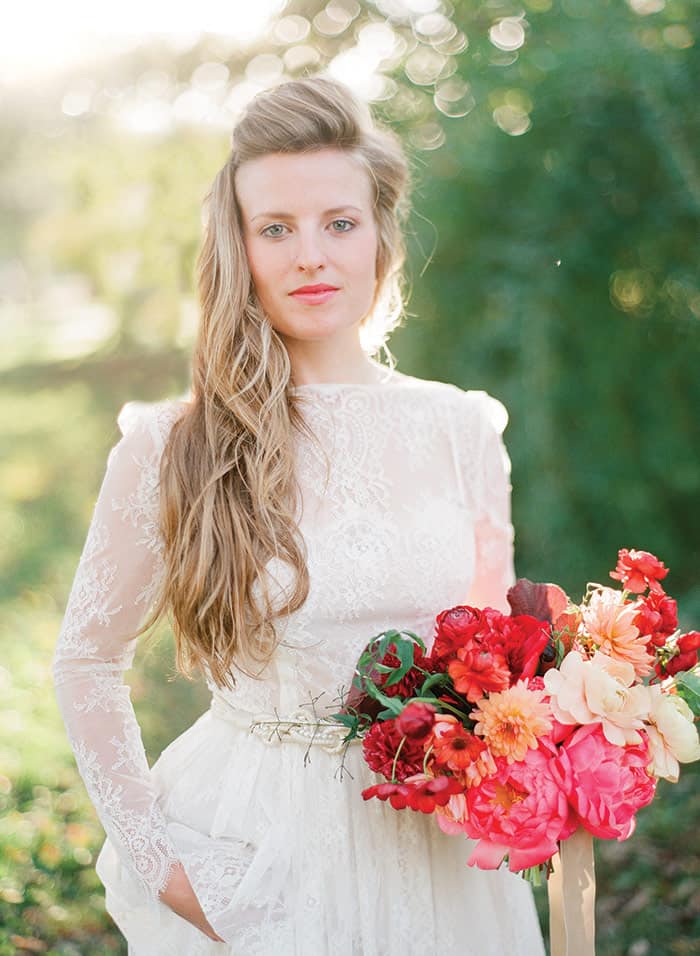“On the wedding day, things are kind of moving pretty fast,” says Matawan-based photographer Ahmet Ze. And amidst the joyful wedding blur—of friends from college hugging, relatives passing a box of tissues, kids whizzing around—digital photography has incredible advantages. Your photographer gets instant visual feedback, doesn’t have to fumble with rolls of film and can take many more photos, with less likelihood of missing special moments.
Is it any wonder digital has become the norm? As Thomas Bialoglow of Oakland-based Aesthete Studios says, “I felt like six or seven years ago that what I was doing on digital was approaching the quality that I was getting on medium-format film, and it gave me so much more flexibility that I decided there was no need to shoot film anymore.”
Yet there are rumblings of a renaissance in film photography. Kay English, a Freehold-based photographer (who shot the images above in film), confirms that more couples are curious about film. “We’re seeing it a lot on the West Coast. It’s been really huge there, and I think it’s becoming popular again on the East Coast for the wedding industry.”
In English’s opinion, “film has a timeless quality that can never match digital photography. The skin tones are absolutely perfect, the background blur or ‘bokeh’ cannot be replicated in digital, and the background colors are dreamy. Film is also amazing if your wedding happens to fall on a very dark or overcast day, as the colors look very vibrant and cheerful.”
Yet this doesn’t have to be an “either/or” proposition, says English, who shoots both film and digital at weddings and says both have their pros and cons. Ze concurs. In fast-paced moments, he says, “I use my digital.” Yet for those timeless portraits, he says: “When I have more control of my environment, such as when the bride is all dressed and I have my alone time with her, then that’s the perfect time to pick up my film camera.”
If you’re curious about film photography, here are some points to keep in mind:
THE PROS:
Last March, English worked with Princeton-based Reverie Events on Nicole Tronolone Sandt’s wedding and during a pre-ceremony portrait session shot several rolls of film of the bride and groom. These photos were so beautifully done, says Tronolone Sandt, who works in public relations and has experience with event photography. “I was able to see the difference, and I loved the grainier, more realistic light and also the light sourcing of the photos,” she says. These are now the portraits hanging up in her home.
THE CONS:
Film can add cost and turn-around time. “It can take several days to weeks to process and be scanned in a lab,” says English. (Nowadays couples receive film photos as scans, just as with digital.) English adds that film is mailed, “which could increase the risk of damage or loss. ‘Light leak’ can also occur where certain parts of the image may be over exposed if it encounters unnecessary light.” Finally film is not very suited to low-light situations.
To minimize the risks, English advises asking photographers how long they’ve been shooting film, if they could show some samples from their portfolio and what film lab they use to develop. Referrals are a good idea here, too.
Proponents of film will gush about its beauty, romance or as Ze says “that organic look.” But in the end, decisions about the medium really boil down to personal preference. Good photographers will take good photos. And your most important decision remains the same: choosing the right photographer for your special day.
When it comes to wedding photos, do you prefer to go digital or use film? Tell us your thoughts in the comment box below or connect with us on social media. We’re on Facebook, Twitter, Instagram, Pinterest and Google+.
Sources:
Floral and event design: Reverie Made
Gown: Katya Katya Sheurina
Props and location: Green Lace Lion
-
 1/4
1/4
-
 2/4
2/4
-
 3/4
3/4
-
 4/4
4/4


